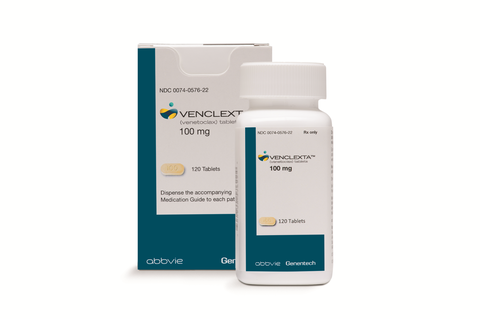
CHICAGO—Last month, partners AbbVie and Roche nabbed a speedy approval for Venclexta and Gazyva in chronic lymphocytic leukemia (CLL). And Tuesday, they rolled out the data that helped get them to the finish line.
A phase 3 study presented at the American Society of Clinical Oncology annual meeting showed that in previously untreated patients with both CLL and other medical conditions, the combination cut the risk of disease progression or death by 65% versus Gazyva and chlorambucil, a regimen commonly used to treat that population.
At the two-year mark, 88.2% of patients in the Venclexta arm hadn’t seen their disease worsen, compared with 64.1% of patients on the standard-of-care combination.
Those results apparently impressed regulators, who green-lighted the combination in mid-May under the FDA’s new Real-Time Oncology Review pilot. The program allows regulators to begin going through data before a company officially submits its complete application, and it yielded a go-ahead for the drugmakers less than three months after their official filing date, said Rod Humerickhouse, M.D., Ph.D., asset strategy leader at AbbVie.
“I think it is a tremendous step forward for the patient that the FDA is committed to identifying breakthrough therapies and getting them out to patients as quickly as possible,” he said.
Meanwhile, thanks to the approval, AbbVie now has two chemo-free options to offer patients in the front-line setting. The Venclexta-Gazyva pairing joins Imbruvica, the Johnson & Johnson-shared blockbuster that AbbVie paid big money to access when it bought out Pharmacyclics for $21 billion back in 2015.
That drug has continued to post impressive results of its own, including six-year data that debuted at ASCO. And with two choices now for doctors and patients, AbbVie execs expect to see chemo’s role in the disease diminish.
“With two new targeted agents that AbbVie has brought forward, it’s really changed the whole treatment paradigm,” Humerickhouse said. “Not only are you having treatment success … you’re doing that with significantly reduced toxicities.”















